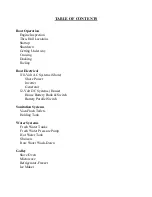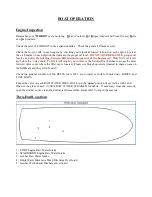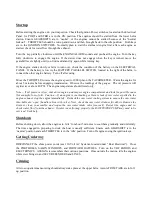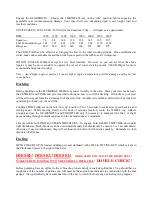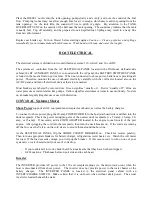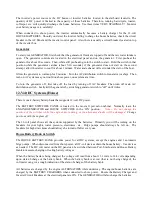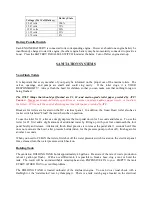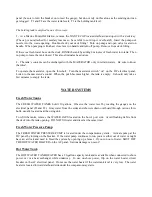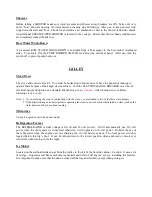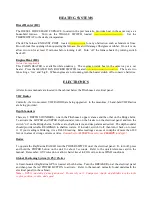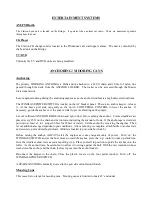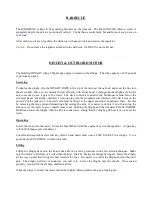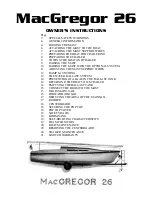
Place the DIESEL nozzle into the tank opening, pump slowly and evenly, and note the sound of the fuel
flow. Pumping too fast may not allow enough time for air to escape, which may result in spouting from the
tank opening. As the tank fills, the sound will rise in pitch or gurgle. Pay attention to the TANK
OVERFLOW VENT
on the outside of the hull near the tank opening. The sound may indicate that the tank
is nearly full. Top off carefully, and be prepared to catch spilled fuel. Spillage may result in a nasty fine
from law enforcement.
Replace each tank cap. Turn on blower before starting engines.
Caution -- Clean up splatter and spillage
immediately for environmental and health reasons. Wash hands with soap and water thoroughly.
BOAT ELECTRICAL
The electrical system is divided into two distribution systems: 110-volt AC and 12-volt DC
.
The systems are controlled from the AC ELECTRICAL PANEL located in the Pilothouse starboard-side
cabinet; the DC AUXILIARY PANEL is co-located with the AC panel; the BATTERY SWITCHES PANEL
is found in the most aft salon port cabinet. When not connected to shore power, batteries are providing all
power. Therefore, monitor the use of onboard electricity carefully with the volt meter located also on the
AC/DC panel, and turn off electrical devices that are not needed.
Most breakers are labeled by colored dots. Green signifies “usually on”. Red is “usually off”. Blue are
water pressure or water-related, like pumps. Yellow signifies electronics or items to use cautiously. No dots
on a breaker signify irregular use or use with discretion.
110-Volt AC Systems (Shore)
Shore Power
supports all AC equipment and receptacles onboard, as well as the battery chargers.
To connect to shore power, plug the 30-amp POWER CORD into the boat (starboard side) and then into the
dock receptacle. Check the power rating/plug size of the nearest dock receptacle (i.e. 50-amp, 30-amp, 20-
amp, or 15-amp). If necessary, add a CORD ADAPTER located in the engine room forward of the port
engine. After plugging the cord into the receptacle, then turn the dock breaker on. If the cords are coming
off the bow, use the Velcro on the cord sleeve to secure them around the bow line.
At the ELECTRICAL PANEL, flip the SHORE CIRCUIT BREAKER on. Check for reverse polarity.
Then turn on appropriate breakers for battery charger, refrigeration, water heater, etc. Watch the volt meter
for load. If the load exceeds voltage, you will pop the breaker. If this occurs, wait to turn on one of your
systems (i.e. water heater) until your use of volts drop.
-
If your outlets fail to work, check the GFIs to make sure that they have not been tripped.
-
GFI Locations: Pilothouse helm on port side and in each head.
Inverter
The INVERTER provides AC power to the 110-volt receptacle plugs (i.e. the microwave oven) when the
boat is disconnected from shore power. The inverter does not provide power to the water heater or the
battery charger. The INVERTER PANEL is located in the electrical panel cabinet with an
INVERT/CHARGE SWITCH. Make certain that it is on Invert when without dock power. The actual
inverter is located beneath the stairs.


